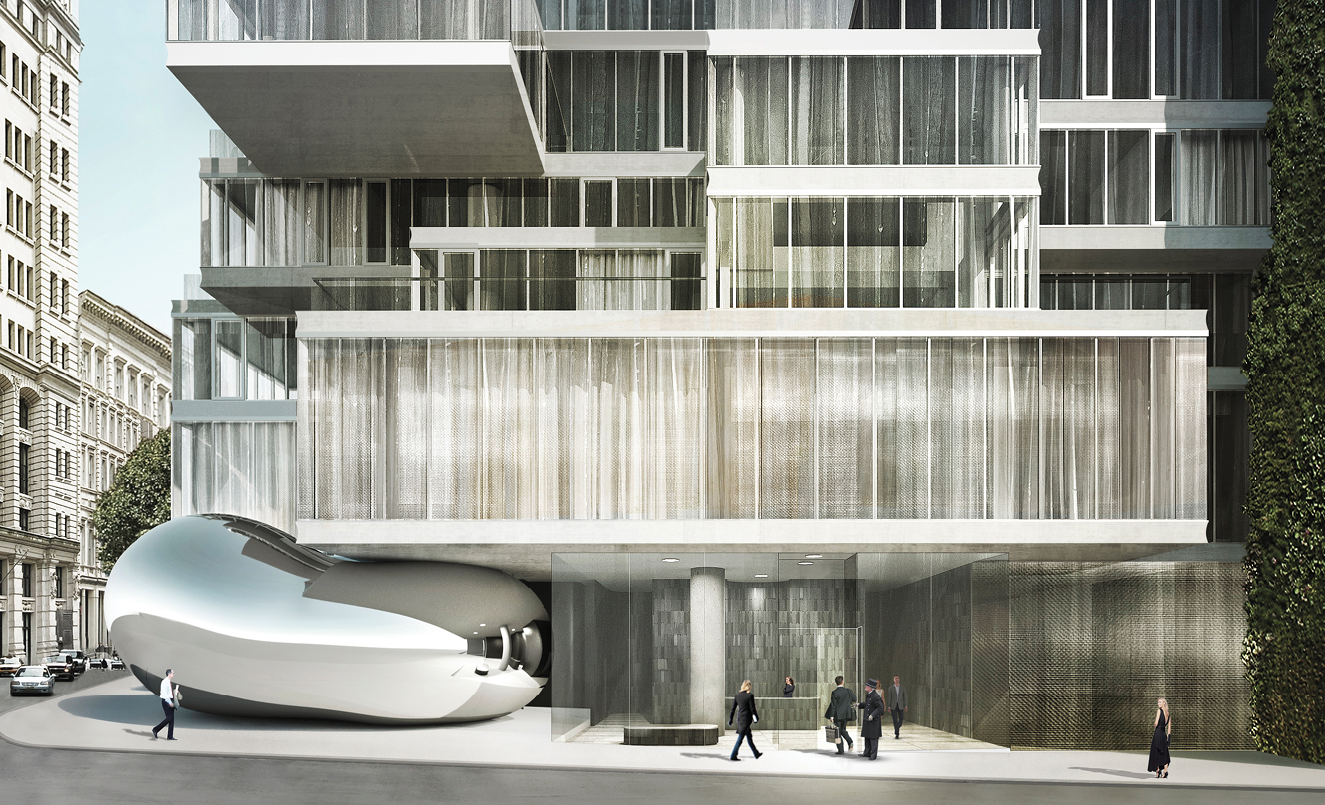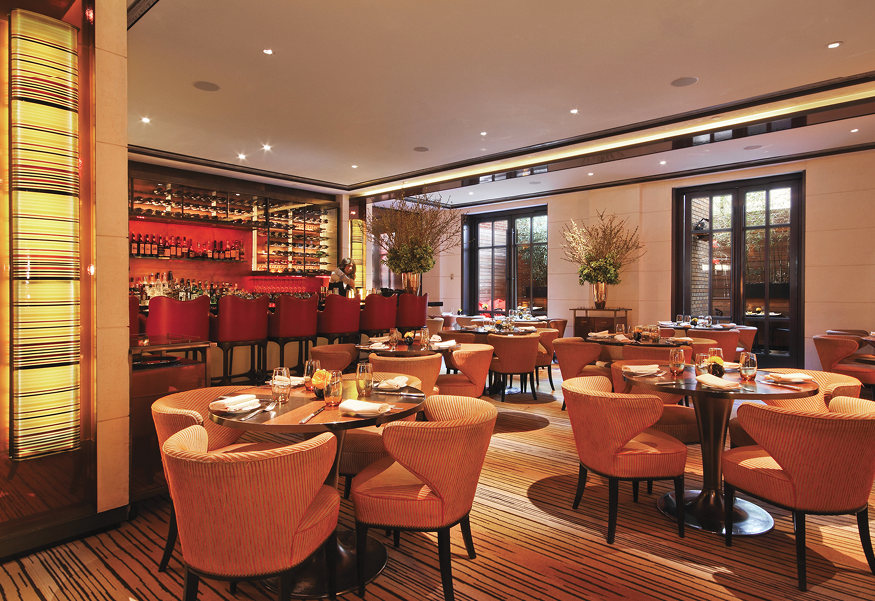


![]()
ONLINE

Building the Extraordinary
Editors’ Note
Izak Senbahar moved to the U.S. in 1977 to attend The Catholic University of America in Washington, D.C. After graduating with a B.A. in mechanical engineering, he moved to New York, where he earned his master’s degree in finance from New York University. Before he entered the real estate market, Senbahar was a Gold Trader for the French financial firm Sucre et Denrées.
Company Brief
Based in New York, Alexico Group LLC (alexicogroup.com) is a real estate development firm with a portfolio of projects including The Mark Hotel, The Laurel, 165 Charles Street, and 56 Leonard. Alexico Group partners, Izak Senbahar and Simon Elias, collectively have more than 50 years of experience in development, construction, ownership, and management of Manhattan real estate. They are recognized leaders in their field with a portfolio that has included some of New York’s most prestigious properties.
How strong is the New York City real estate market today and is it sustainable?
It’s very strong. In terms of how sustainable and for how long, it’s a tough call. There are forces going either way.
Is a large percentage of the population going to be priced out of the city and are you concerned that we won’t have enough affordable housing?
It’s a matter of market conditions. You can say whatever you want, but if the land prices do not justify building affordable housing, then you cannot build affordable housing. It starts from the source, from land prices. The 80/20 program works but when you push the envelope on the 20, projects don’t pan out.

56 Leonard
Where does 56 Leonard stand and what is your vision for what it will do for downtown?
56 Leonard came to the right market. It was the right product in the right location at the right time. So it has been a tremendous success.
I think 56 Leonard enhances the Manhattan skyline, and the Anish Kapoor Sculpture brings it entirely to another level. 56 Leonard will affect downtown in a very positive way.
With 56 Leonard, you built something that didn’t necessarily fit into the location, but you were able to take it to another level. How did you achieve that?
There is a lot of work that goes into the planning. It doesn’t occur to me in one second. I analyze the site and the immediate vicinity. I walk the neighborhood ad nauseam and I dream about what I can create that will add to life in the area.
When the start-to-finish on a project is so long, is it hard to be patient in the early stages?
One can control everything except the market. You cannot control the macro economy. You can make an informed guess at it, but it’s still a guess.
Are you happy with where The Mark Hotel stands today? Is the supply of hotel rooms in New York City available to meet demand?
Yes. New York City is hot, and there is business and tourism coming from everywhere in the world – everybody wants to be in the big city. We’re fortunate to be able to have such a vibrant city as our base. The number of affluent travelers, be it for business or leisure, is growing. A lot of emerging countries are doing very well and are creating more affluent travelers. The European visitors travel to the U.S. routinely; however, the pool of international travelers from various other continents is increasing greatly because of globalization. The Mark happens to be a landmark building in a fabulous location, and it has all of the right attributes to be at the top of the list of the affluent traveler.
A visitor staying at The Mark, in a matter of a day or two, feels like living the life of a local Eastsider. Central Park is right there – one of the most beautiful parks in the world – providing a Zen relief right in the middle of the bustling city. Then, there are the museums, galleries, shops, and restaurants. It beats any location downtown or midtown, which are congested and feel touristy.

Lounge at The Mark Restaurant by Jean-Georges
At a time when many talk about how challenging a restaurant concept in a hotel is, you were able to build a partnership that has become a destination for the local community. How critical is that and how have you done it?
In any business, you have to watch the trends; you have to analyze the market; and you have to listen to your customer. In my assessment of the market, I determined that people’s lifestyles and demands are changing. People don’t want their dinner experience to be too fussy. The days of people wanting to sit down for a three-hour, five-course meal on a regular basis are gone. By and large, people want to go to a place where the food is simple and healthy, and they can relate to it, and the menu is diverse enough to eat there three times a week.
This is what we have created for the Upper East Side. It’s why many who live in the area come and eat there a few times a week, be it for breakfast, lunch, brunch or dinner. You have to create a simple menu with a lot of variety, and you have to create an atmosphere where guests feel comfortable and pampered in an unassuming way. The decor at The Mark makes you feel like you’re in an important place, but the atmosphere makes you relaxed and the lighting puts you in a serene mood. There is also, of course, the genius of Jean-Georges. You get all of this under one roof.
Are there opportunities to expand on The Mark brand?
The Mark belongs where it is, in New York, but it also belongs in London, in Los Angeles, and in Paris.
These are all of the places that we’re actively looking to expand the brand. We have the best occupancy in the luxury category in the city. The brand is very well-recognized all over the world, which means it needs to go places.
Is this a time for opportunity in Manhattan or is it challenging to find the locations?
It’s very challenging. There are no obvious opportunities out there. The mistake to avoid is to overpay for the wrong project. If you overpay for the right project, you will come out all right. Because so much money is chasing deals, people are becoming more indiscriminate. There are a lot of deal junkies out there and there is a lot of other people’s money (OPM) circulating. So the junkies plus the OPM makes the market very challenging for mere mortals.
We’re willing to overpay but only if the project is exceptional.
Because of that, have you been looking at other markets more than you normally would?
This is why we’re trying to grow The Mark brand, in which we think we have a lot of capped value that can be uncapped in different places of the world. But our heart is in New York and we want to build more here. We look at every opportunity and continue to dream. If you’re going to create another 56 Leonard or another The Mark, it just doesn’t happen overnight.
People today talk about international buyers who are purchasing apartments for top dollar but not living in them Are the apartments at 56 Leonard being lived in?
This is more prevalent in the 57th Street corridor or midtown. In Tribeca, it’s mostly people who live downtown who are upgrading and moving to bigger and better apartments, or to a building with more amenities. We have some international buyers, maybe 20 percent. However, these buyers aren’t investors but architectural buffs. They like to buy in buildings where they follow and enjoy the architect.
What has made the partnership with Simon Elias work so well?
We complement each other. We look at things long term rather than on a daily basis.
What makes this industry so exciting? Why is real estate so great?
To me, it’s like making a movie. It’s very creative. It has many facets to it. You have a story line and a cast of characters, and then you create the end product. With every step, you have to be creative. From planning to financing, to building to marketing, all of those areas, in and of themselves, are areas where one can build a career. To be able to conduct a group like this and create a building that most people like makes it exciting for me. It’s a lot of hard work and challenging at times, but there is a bright light at the end of the tunnel. I like that you have a vision and a story, and you get the characters and you realize the building.
If the end product is received well, and people walking by it or living in it enjoy it, then I can feel proud of what we have achieved. The ultimate gift is putting a smile on somebody’s face.•